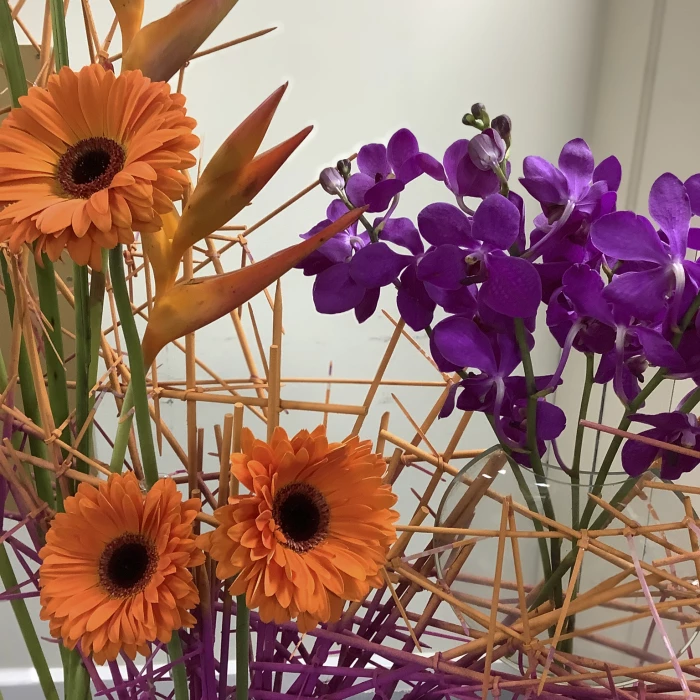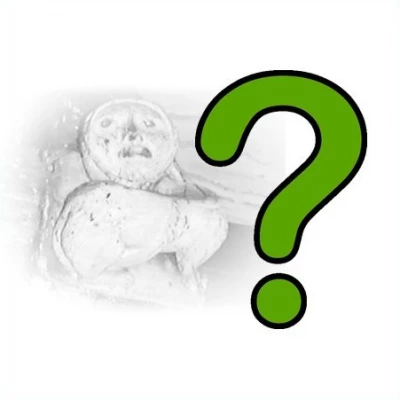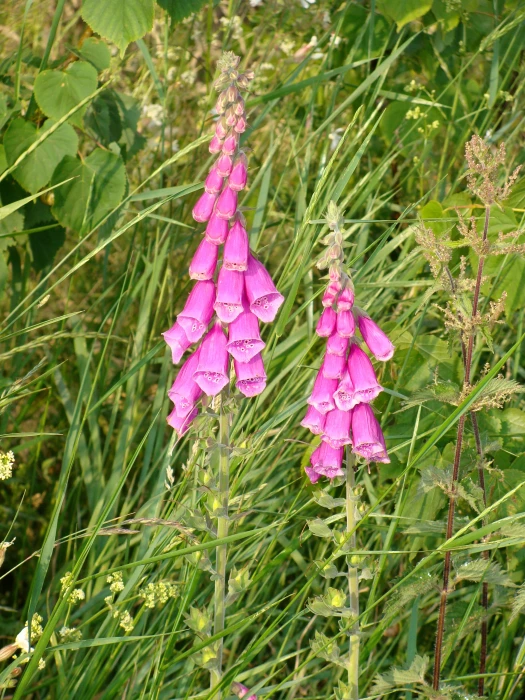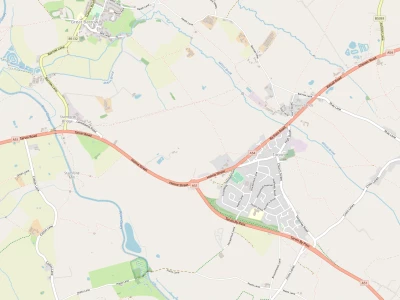One of the most stylish wild flowers to be seen (either in the woodland or in the wider countryside) must surely be the stately magenta foxgloves. In the wild form, Digitalis Purpurea is a biennial plant, growing a rosette of leaves but no stem during its first year. It is in the second year that one or more flowering stems grow up to 3 to 4 feet high (and occasionally even more), bearing long spikes of drooping flowers in the early summer. As the blossoms on the main stem gradually fall away, smaller lateral shoots are often thrown out from its lower parts, and these can remain in flower after the principal stem has shed its blossoms, thereby lengthening the flowering period. (They are also promptly developed if by some mischance the central stem sustains a serious injury.)
The Foxglove is a favourite food flower of the honey-bee, and its life-cycle is totally dependent upon bees. It is for this reason that the tall and stately spikes of flowers are at their best in those sunny, midsummer days when the bees are busiest. The fused tube of the petals has a projecting lower lip which acts as an alighting platform for the bee, which pushes its way up through the "bell" of petals (in order to get at the honey at the top of the flower). The pollen sacs of the stamens (which lie flat on the tube of petals above where the bee moves) will then be rubbed against its back. As it goes from flower to flower (whether up the spike or on another plant), the bee rubs pollen obtained from one blossom on to the forked stigma of another blossom, and thus the flower is fertilized and seeds are able to be produced. The life of each flower, from the time the bud opens till the time the tube of petals slips off, is about six days. An amazing number of seeds are produced; a single Foxglove plant can provide between one to two million seeds, each one of which could produce a foxglove of the next generation.
It is worth noting that although the flower is such a favourite with bees and is much visited by many other smaller insects (who may be seen taking refuge from cold and wet in its drooping blossoms on chilly evenings), there are no animals which will browse upon the plant. It seems that, instinctively, they are able to recognize its poisonous character.
It is always fascinating to look at possible origins of the names of flowers – and the Foxglove is no exception. The Latin name is relatively simple – Digitalis means "finger-like" and refers to the ease with which a flower of Digitalis purpurea can be fitted over a human fingertip. By extension, a whole set of finger coverings would collectively be gloves. But what about the 'Fox' part of the name? The origins of the name are decidedly unclear, but it appears that it can be traced all the way back to the Anglo-Saxon period, when it is recorded as foxes glofe/glofa or fox's glove. The idea that foxes wore the flowers on their paws to silence their movements as they stealthily hunted their prey is fanciful, to say the least, even though the woody hillsides where the foxes make their earths might frequently be covered with foxglove flowers. Then there appears a complication in the story. It seems that the first person to systematically record the name "foxglove" (in a herbal of 1542) was a German botanist by the name of Leonhard Fuchs (the same gentleman for whom the plant genus Fuchsia is named.). I know no German, but I am informed that the family name, Fuchs in German would be translated to "Fox" in English. Could it be that they are "Leonhard Fuchs' gloves" – or am I being silly? Quite probably!
As a plant which is poisonous but also has curative properties, it was said that foxgloves could both 'raise the dead and kill the living' and the foxglove has long featured in herbal medicine. It was introduced into the London Pharmacopoeia in 1650, though it did not come into frequent use until a century later, and was first brought prominently to the notice of the medical profession by Dr. W. Withering, who in his 'Acount of the Foxglove', in 1785, gave details of upwards of 200 cases (mainly oedema – or dropsy – a condition characterized by an accumulation of watery fluid in the tissues), to treat which it had proved useful. The family of drugs are still valuable in medicine today, although uninformed ingestion of any parts of the plant can result in nausea, headaches and diarrhoea, and perhaps even heart and kidney problems. It seems advisable for us all just to admire the glorious spikes of foxgloves from a distance rather than becoming too closely acquainted!
Quick Links
Get In Touch
TarvinOnline is powered by our active community.
Please send us your news and views.









